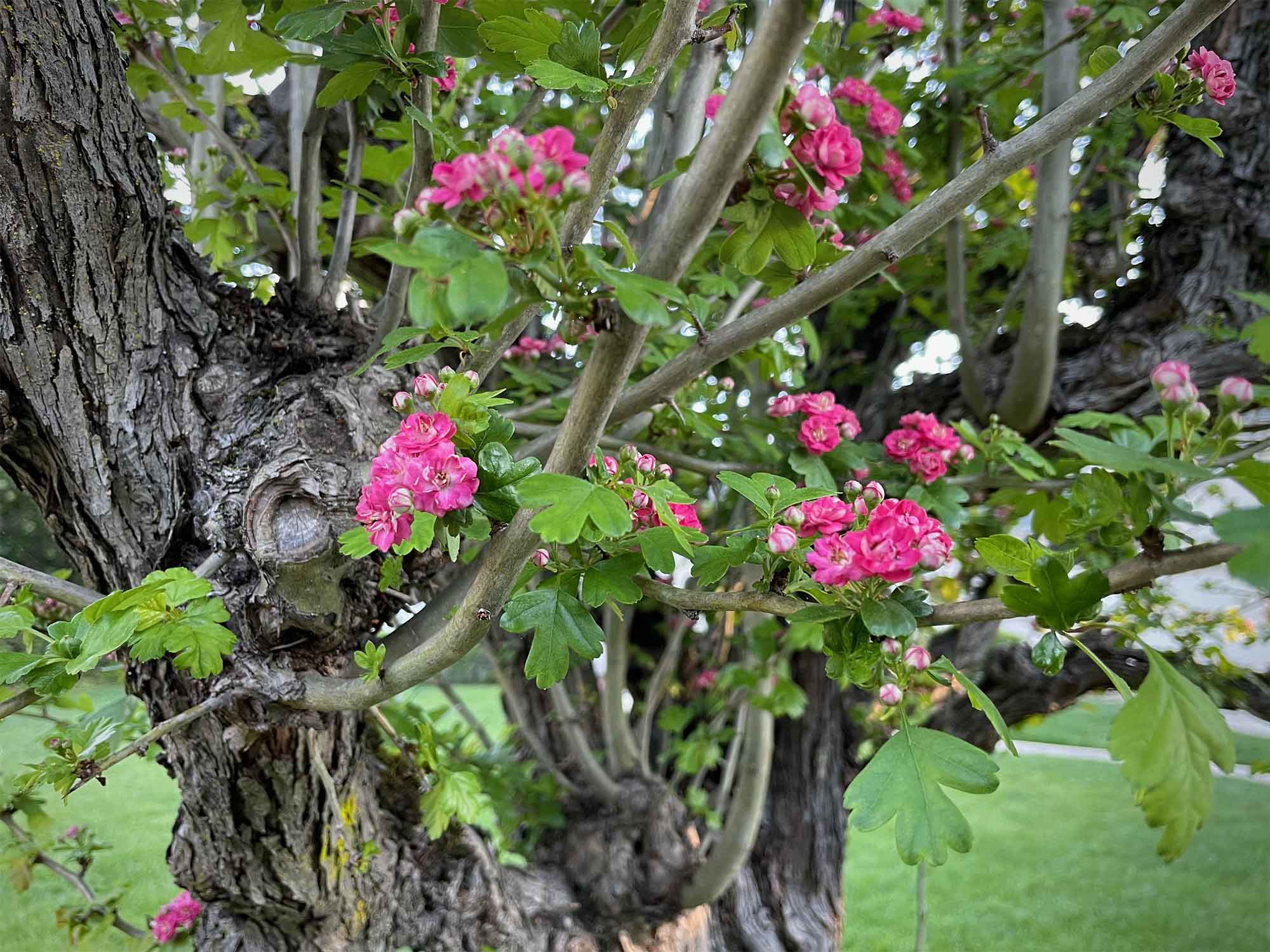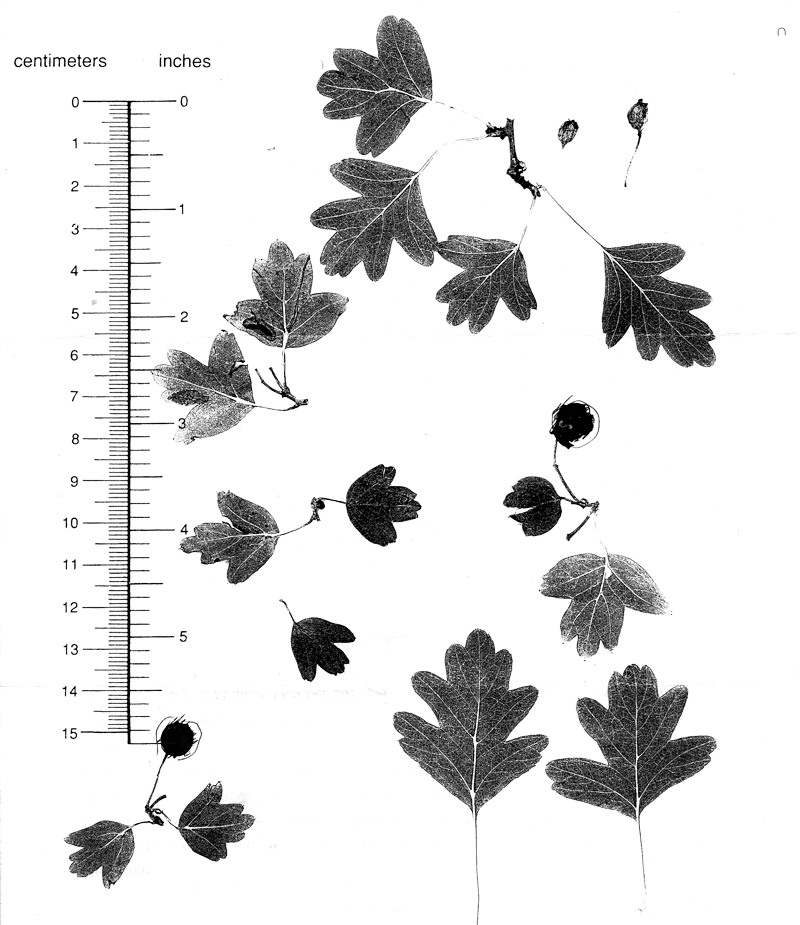Crataegus monogyna
 hawthorn, hedgerow thorn
hawthorn, hedgerow thorn
The leaves are not toothed, but have rounded lobes and the red ¼-inch fruits contain one stone. Hawthorn flowers have a faint odor that is repulsive to bees, but attracts flies (who take care of the pollination). A wild plant that can be used for a hedge spiny enough to contain cattle is a valuable resource that conserves the labor and materials needed for fencing and has been in use at least as far back as Roman times. A tree named krataigos is in the Greek lexicon, but what tree it denoted is uncertain. The Mayflower of 1620 was named for the hawthorn flower.
See two examples at the intersection of the Sonoma Terrace and Stanford Avenue bike paths. It is established as a weed at Jasper Ridge Biological Preserve.
Name derivation: Crataegus – The Gk name from kratos (strength) referring to the hard wood; monogyna – one pistil.
About this Entry: The main text of this entry is from the book Trees of Stanford and Environs, by Ronald Bracewell, published 2005. John Rawlings subsequently added the Jasper Ridge note.





